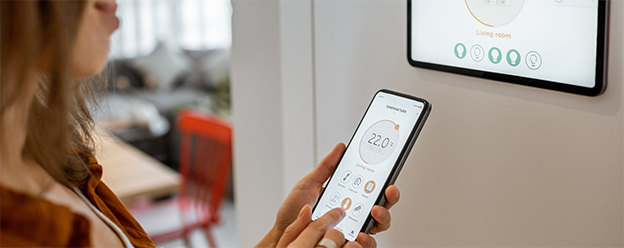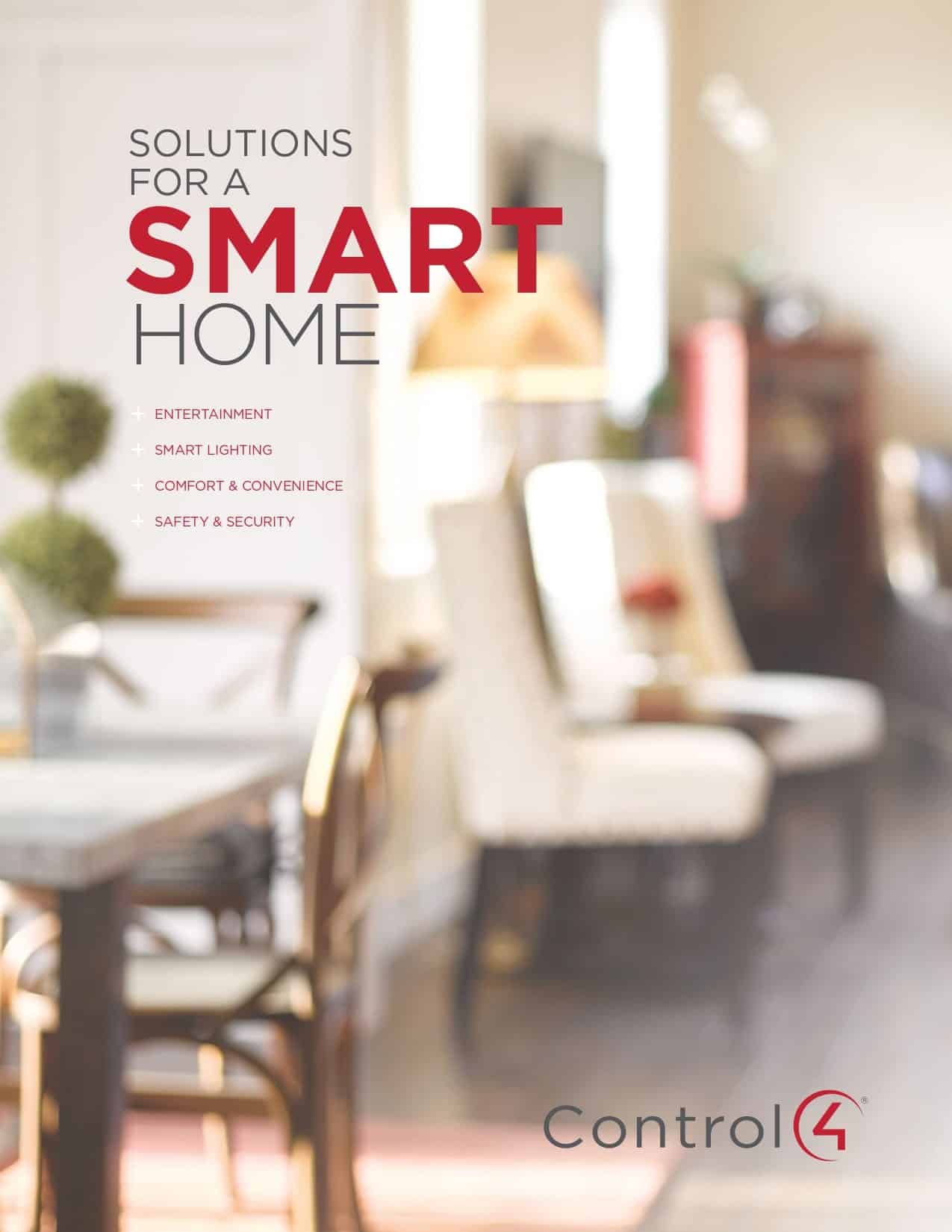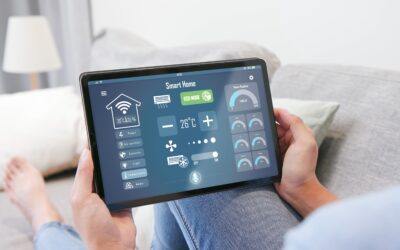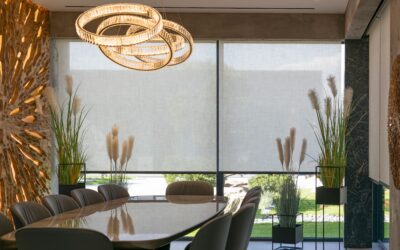When people first think of home automation, they often think of lighting control. In fact, it’s one of the first smart home features people implement into their homes. And for good reason! Lighting control has many benefits – convenience, safety, and aesthetic being at the top of the list.
Choosing the right lighting for your home can be a bit of an overwhelming process when you’re just starting out. There’s a lot of information out there, and it can be challenging to sort through it all. We thought it would be helpful to compile all of that information into one blog post, so you have something to reference when it’s time to begin your project. Let’s get started!
Begin lighting projects outdoors
Safety might just be the most important benefit to lighting control. No one likes to come home to a dark house – everyone feels safer when their path from the car to the door is lit.
Maybe you leave your outdoor and indoor lights on all day so that they’re already on when you come home. Though this is helpful, it wastes energy and is not very efficient. Home automation offers a better way!
Installing a lighting control system at your home makes like a lot easier – you can turn your lights on from your phone when you pull up in the driveway, press one button on your keypad inside your house to turn all your outdoor lights on or off at once, and even set your lights on a timer. Motion sensors can also be installed to make your lights come on when someone walks by too.
Not only do outdoor lighting controls make you feel safer while you’re at home, but they also act as a deterrent to intruders – outdoor lights are a key sign to show that someone is home, even when you’re not!
When thinking about adding lighting controls to your home, always make sure that outdoor lighting is a part of your plan.
Inside lighting is just as important
It’s very important for your safety to have your outdoor path illuminated, but it’s also a good idea to turn lights on throughout your home before you walk in, instead of walking through the dark to get each light on. Indoor lights can be controlled in the same way as outdoor lights, so you feel comfortable when you arrive home at night.
The convenience factor of indoor lights isn’t so bad either – you can turn your lights on and off from anywhere. Forget to turn your lights off before you left for the day? Or maybe you’re in bed and don’t want to get up to turn off the light? Not a problem – you can do it from your phone!
Don’t forget about lighting sensors and dimmers
Lighting sensors and dimmers aren’t anything new – and maybe that’s why people opt to skip them for lighting controls. But these sensors and dimmers are different – they’re linked directly with your smart home integration system and should definitely be a part of your lighting plan.
You can of course control your lighting sensors and dimmers just as you can your lights, but get this – they can also control themselves! Sensors can sense just how much natural light is coming in at any time of day, and adjust your lights accordingly. If it’s the morning and the sun is shining through, your lights will automatically turn off or dim way down. When it’s night and the sun is setting, your lights will dim back up. You can also preset your lights, so they dim at exactly the time of day you want.
Window treatment controls work great with lighting controls
When thinking about your lighting project, you might want to consider window treatment controls as well. The two work very well together and will save you even more in energy and costs if you use both.
When installed correctly, lighting controls and window controls will link up together. For instance – say the sun is shining into your home on a hot summer day. When the room starts to get warmer, the system realizes that the sun is raising the temperature, so it will lower the blinds to help stabilize the temperature. Your lighting will adjust accordingly as well.
Aesthetic is important too
Lighting can make a big design impact in your home when done correctly. The key here is variety – you want to make sure to use a mixture of lights for the greatest impact. Hi-hats in the ceiling are a great way to add good light without interfering with the space. For areas you want a bit more style, incorporate pendant lighting, lamps, and other types of recessed lighting.
If you’d like to make the room appear larger, a mix of overhead lighting, such as hi-hats, and pendant lighting or lamps will work best. You want to position lights so they reflect off your walls – this will make your entire space feel bigger.
The best part is that your lighting controls will work with any type of lighting you choose for your home!
Work with a professional
As you can see, there’s a lot that goes into lighting controls. To ensure that things are done right, it’s always best to work with a professional. A professional installer will be able to help you figure out the perfect, unique solution for your home, so you can reap all the benefits – convenience, safety, and aesthetic – of lighting controls.
At Lifetronic, we pride ourselves on our dedication to our clients. We always take the time to understand your needs and lifestyle, so we can suggest solutions that will work best for you. If you’re ready to get started on your lighting project, please feel free to contact us at any time.
Just started your home automation research? Download our smart home solutions guide to learn more.
About Lifetronic Systems in Greenwich and Westport, CT
We offer home automation installation services in Fairfield County, Connecticut and Westchester, New York. We service all of Fairfield County, CT including Westport, Greenwich, Wilton, Darien, New Canaan and beyond. We also travel beyond Connecticut and New York upon request.





